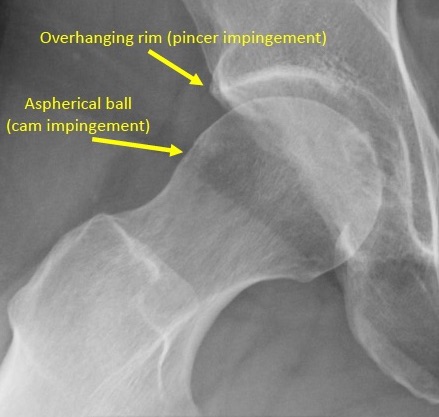Femoroacetabular impingement (FAI) is a condition where the bones in the hip impinge in areas where they should not, causing pain and decreased range of motion. The hip joint is like a ball in a socket. In this condition, the neck of the ball and the edge of the socket rub against each other causing damage and pain to the hip joint. The damage can occur to the articular cartilage (the smooth white surface which covers the hip joint) or the labral tissue (the lining of the edge of the socket) during normal movement of the hip. Over time, more cartilage and labrum are lost until eventually the ball and the socket impinge on one another.
FAI impingement comes in two forms: Cam and Pincer. Most diagnoses of FAI include a combination of the Cam and Pincer forms.
CAM Impingement: The Cam form of impingement is when the edge of the ball is not perfectly round. This lack of roundness causes abnormal contact between the surfaces.

